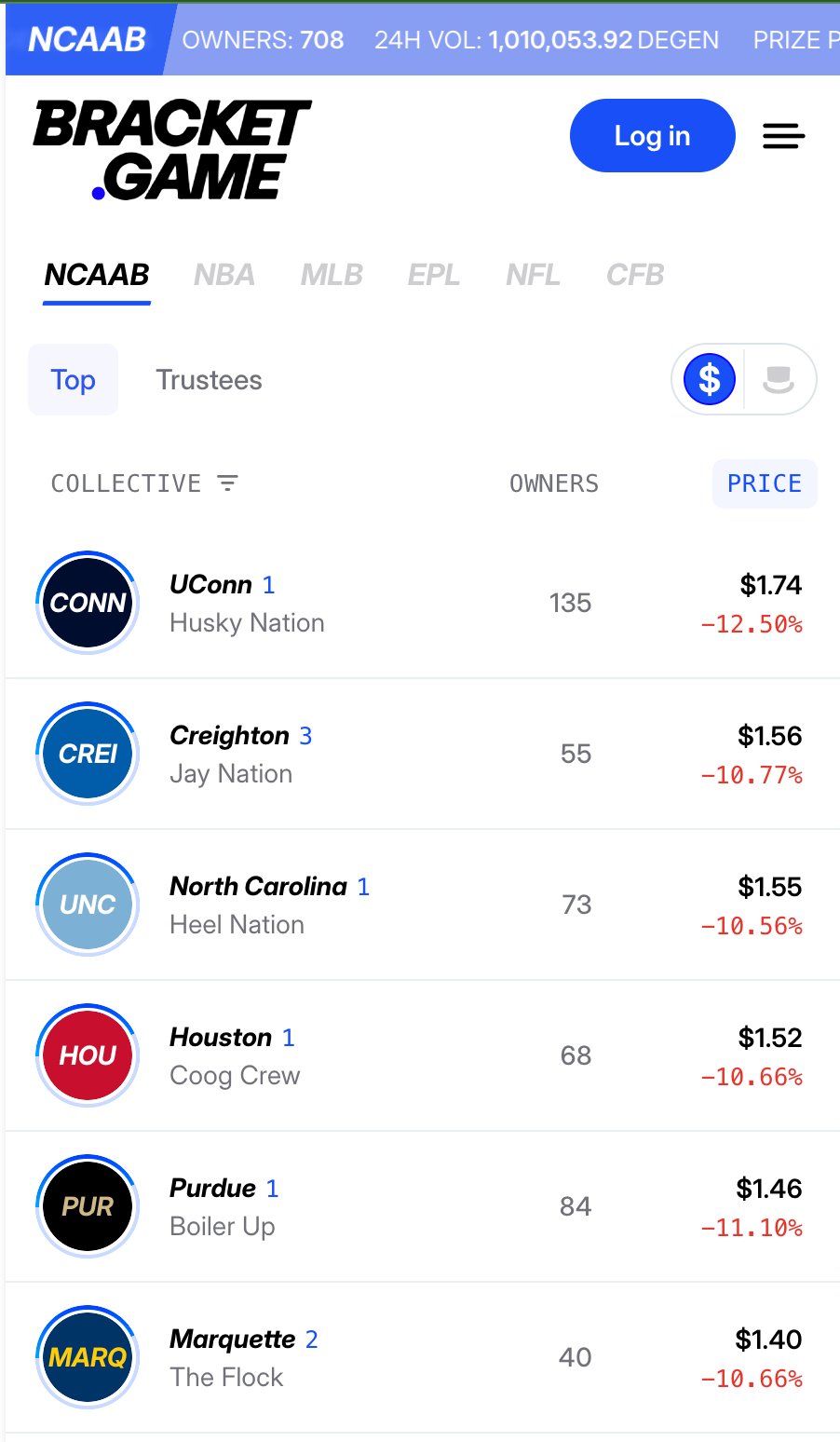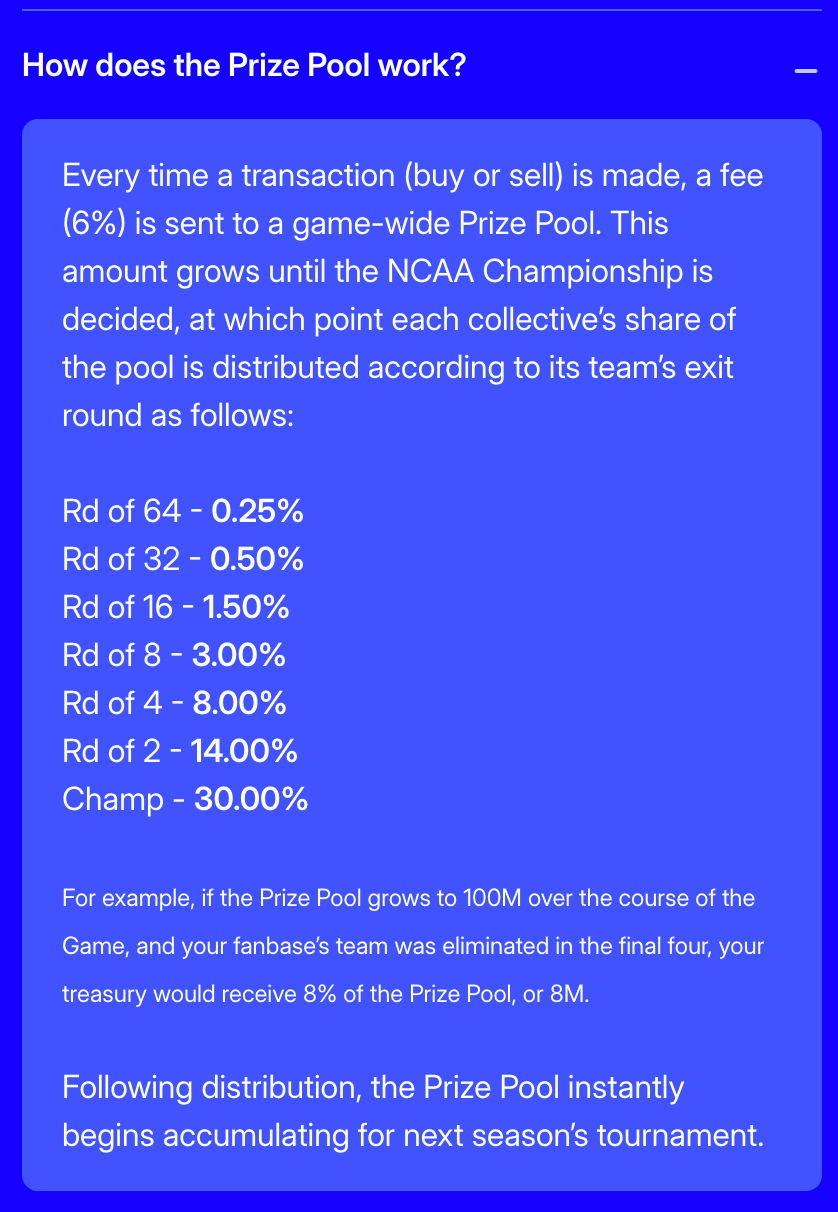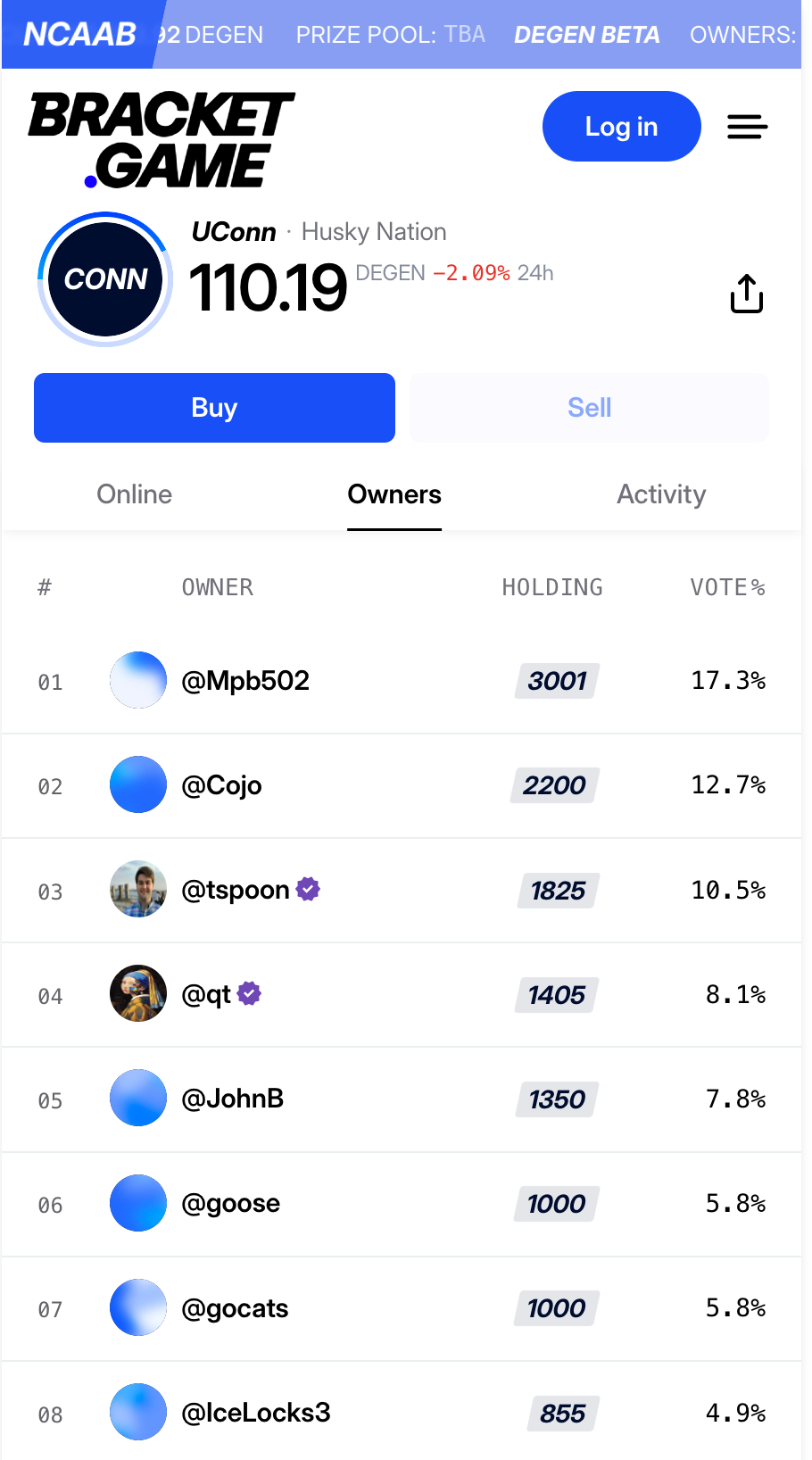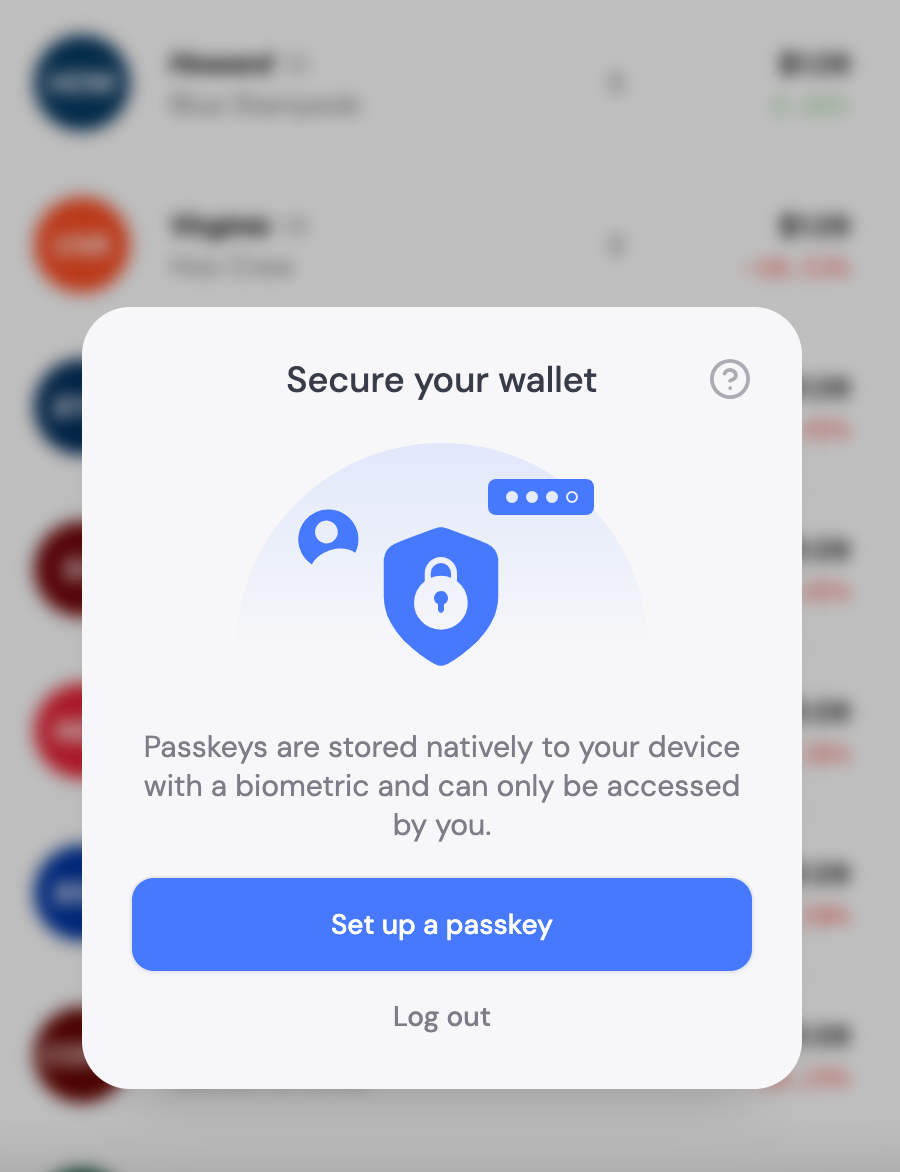March Madness onchain | A new kind of Bracket.Game
This year you can participate in March Madness onchain via a new app called Bracket.Game. The app allows you to support your favorite team and form collectives with other fans. It's also a great example of what the future of onchain could look like.

March Madness, of all things, is moving onchain.
Participating in the NCAA basketball tournament onchain versus the standard paper bracket also provides a great way to understand the functionality and utility of blockchain-based apps.
It doesn’t hurt that March Madness is fun. It’s fun because there is a low barrier to entry (I helped my daughter who is in first grade fill out a bracket this year), the event only lasts a few weeks (so it doesn’t take an enormous amount of attention), and the tournament is full of stories of underdogs and upsets, which provides easy to grasp narratives.
One of the things that I think is noteworthy about the current buzz around onchain apps and services is that many of them are not financially oriented. While money was the first use case for getting people onchain, it’s far from the only use case — and in some instances, it might not even be the best one.
Check it out:
The Bracket.Game makes its first appearance
The Bracket.Game is an onchain app that is designed to let sports fans follow and interact with teams differently.

Like the name implies, Bracket.Game makes it possible for people to engage with sports brackets, or participate in tournaments common in major sports, like the NBA Finals, or the MLB World Series, or the NFL playoffs, in a new way.
This year’s March Madness is the first tournament available on the newly launched Bracket.Game.
The main idea is that people can buy positions in teams, mainly as a way of showing support. Like a Super Bowl square game or an office bracket pool that costs $20 or whatever to enter, the idea is that fans can use the app to show their support by how much they are willing to back their team.
The reward part of this setup help incentivize the gaming aspects of participation. Payouts come to the fans of the teams that go the deepest in a tournament — so not only can you earn bragging rights if your team does well, but you can also make some money.

The earnings are proportional to how well your team does and how much money you put up at the onset to support them.
Bracket.Game is built on Base and degen (a Base-based currency that is gaining traction in new social applications, especially on Farcaster).
Individual and collective play
One thing that I feel like I say over and over again in all of these posts is that the most interesting thing about moving onchain is that the nature of globally distributed and community-owned networks will enable new kinds of organizing and coordination.

Another way to think about it is that the most interesting onchain applications will be the things we just can’t do with our current financial or information networks and services.
Take for example one of the potential use cases for Bracket.Game. One of the goals of the app is to allow fans to get together and pool resources, or form collectives. These collectives can then be leveraged to take action in the real world.
It’s totally clear what that will look like. There was that time when a group of people tried to create a distributed autonomous organization (DAO) to buy the Denver Broncos, so maybe something like that on a smaller scale.
Thinking out loud here, but maybe I can gather up some As fans and we can buy the team and keep them where they belong, right here in Oakland.
But the point is launching apps onchain provides the ability to rapidly and securely deploy or capture capital and attention at various scales will have some interesting implications.
Onchain organizing and gaming might just even make your favorite sports team better, who knows?
Team onchain
Bracket.Game is easy to understand because it’s a mashup of an old concept of filling out a tournament bracket but with different kinds of social or group dynamics involved.

To participate in the Bracket.Game you create a wallet based on an email. The wallet setup is designed to be straightforward and doesn't require a background or previous knowledge in crypto.
The nature of the onchain setup also makes it easier to coordinate and organize a fanbase. Groups of fans can easily pool resources and then vote on how to deploy those resources.
Here’s a bit more context from a Twitter direct message with Bracket.Game, “Especially in the team sports model, the Game itself exists to provide liquidity to fanbases who are then empowered to contribute to the direction of their program. Keep a star player, go after a star recruit, or make a bold hire. We're building tools to enable all of these actions.”
This makes even more sense within the context of the changing dynamics of how professional sports work, especially now that athletes in college are able to sign endorsement deals.
The takeaway
The social web or social media was a main driver for the adoption of web2. I mean accessing email was one thing, but once people could share photos, post about whatever, and reconnect with old friends, the consumer internet really took off.
In some ways, it feels like this same kind of trend is developing in regards to web3.
The first wave of adopters were the people who came for the money — crypto then DeFi, etc. The second wave of onchain adoption will likely come from people who are interested in doing things differently, like showing the true depths of the fan status of their favorite sports teams by putting skin in the game and creating fan-based collectives.
Moving onchain will be different and hopefully we can have some fun.